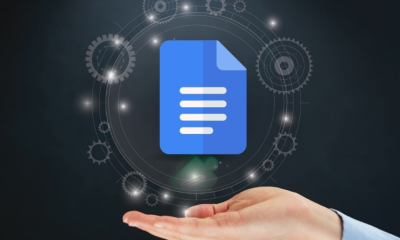NFT
What is an NFT marketplace? NFT marketplace development

At the end of 2021, the NFT marketplace grew by 300%, and many large NFT projects were sold at auction for millions of dollars, such as Beeple’s collage “Every Day: The First 5000 Days,” which cost the buyer $69 million. Also, the industry is actively supported by celebrities tokenizing their music, paintings, videos, and other creative objects, making the NFT industry even more attractive for investment. Why is investing in NFT marketplace app development a profitable decision?
What is NFT? It is a token that represents ownership of assets. Unlike crypto, it is non-interchangeable. This means that no two NFTs are identical, and one token does not equal another. Consequently, they cannot be used as a means of payment in retail outlets or for trading.
Perspectives on NFT and NFT marketplace development
NFTs open the way to a decentralized economy — an economy without intermediaries such as a bank or government. In the future, they can completely change markets such as real estate, because not everyone on the land has legally registered rights to their land and property, and with NFT they can sell it.
NFT also solves a lot of copyright problems, which is not unimportant for art creators. Thanks to blockchain technology, records of the creation and ownership of work remain in the database forever.
Anyway, NFT and other areas in the sphere, such as acceptance of payments, is a very promising topic, which will surely develop in the future.
What is an NFT marketplace?
NFT marketplace is a trading blockchain platform that gives the opportunity to store, sell, and buy non-mutually exchangeable tokens. Moreover, the functionality of such a service allows users to create their own NFTs. For this purpose, smart contracts add data to each new asset and prescribe all the necessary parameters, including the name, indivisibility and address in the blockchain. Such NFTs can then also be traded at a fixed price or at auction.
To the client, an NFT marketplace looks like an ordinary online store, but from a technical point of view, it has much more extensive and complex functionality. Here are the most important functions to be implemented:
- Registration and Authorization. To provide the ability to buy and sell tokens, the user needs a personal account with the integration of a crypto wallet.
- Search and filter system. Functionality with which the user can quickly find the token or section they are interested in.
- Lots of publications. The process of putting it up for sale should be quick and intuitive.
- Transaction History. A separate section where the user can see the transaction history.
- Visualizes how much marketplace users like individual NFTs or sellers.
- Push notifications. Help inform users about new products in your favorite sections, auction bids, and other important events.
- Support services should work around the clock and help users solve all their problems.
Stages of NFT marketplace development
Step 1 — Information gathering and analytics
The NFT marketplace development team first examines the customer requirements and conducts a market analysis. This is necessary to make sure of the technical feasibility of the project before the start of production.
Also, at this stage, several fundamental questions need to be answered:
- Who is the target audience for the project?
- How exactly will token trading be performed?
- What functionality must be implemented?
- What is the monetization model for the platform?
- What token protocol will be used: ERC721, ERC1155, BEP-721 or BEP-1155?
- What blockchain will the project be built on?
Step 2: Technical documentation
When all the necessary information for NFT marketplace development is collected, the technical documentation of the project is created. It describes the requirements for the NFT marketplace, the stack of technologies that will be used in the production, the production plan, security parameters, and other important information. The cost and estimated time of the project implementation are calculated based on the created document.
Step 3: Projecting
At this stage, business analysts work together with the designers to design the efficient architecture of the user interface, a logical navigation system, and mocaps of individual pages containing a description of the functionality to be placed. In this way, a sort of skeleton of the trading platform is formed which considers the likely path of the user.
Step 4. Design
The appearance of the NFT marketplace plays an important role, since it forms the first impression of a person about the project. Therefore, it is extremely important that the design should be trustworthy, user-friendly, and easy to grasp.
Step 5. Frontend-development
Frontend — is the external part of the trading platform, which receives user requests, sends them to the server for further processing, and displays the result in a format comfortable for perception. Besides, this part is responsible for interface reliability and performance. The frontend developer’s technological stack may vary, depending on the peculiarities of the project.
Step 6. Backend
The most extensive stage of production, in which the server part of the platform, which is responsible for the logic of the entire project, is created. In addition to the basic functionality in the process of NFT marketplace development, you need to program the work with the blockchain and crypto-purses, as well as to implement a reliable auction mechanism.
Step 7: Testing
After the technical part of NFT marketplace development is finished, we need to make sure that the platform works correctly and according to the original plans. For this purpose, the project is transferred to the QA department, where multi-level testing is performed. If any errors are detected, they are sent to the responsible specialists for revision and then double-checked.
Where to order NFT marketplace development
NFT marketplace development and other high-loaded blockchain solutions — is a very complex task that requires the utmost professionalism. For implementing such projects, the company must have a formed team of specialists with experience in working together so that they can guarantee the high quality and speed of product implementation.
It is also important to understand that such projects have not yet fully revealed themselves. We have yet to see a real flowering of this sphere. So startups need to have patience and resources.


















